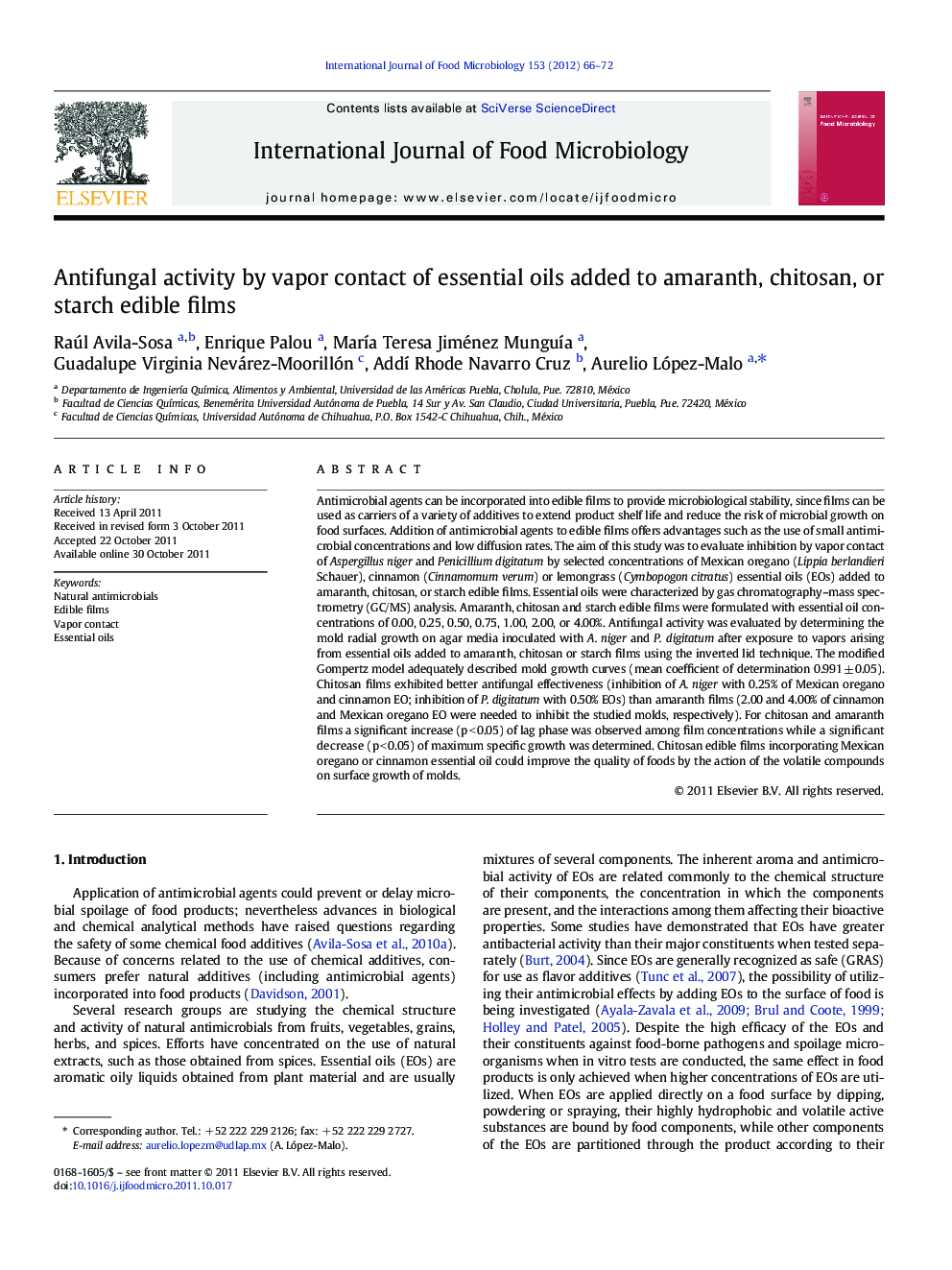| کد مقاله | کد نشریه | سال انتشار | مقاله انگلیسی | نسخه تمام متن |
|---|---|---|---|---|
| 4367821 | 1616653 | 2012 | 7 صفحه PDF | دانلود رایگان |

Antimicrobial agents can be incorporated into edible films to provide microbiological stability, since films can be used as carriers of a variety of additives to extend product shelf life and reduce the risk of microbial growth on food surfaces. Addition of antimicrobial agents to edible films offers advantages such as the use of small antimicrobial concentrations and low diffusion rates. The aim of this study was to evaluate inhibition by vapor contact of Aspergillus niger and Penicillium digitatum by selected concentrations of Mexican oregano (Lippia berlandieri Schauer), cinnamon (Cinnamomum verum) or lemongrass (Cymbopogon citratus) essential oils (EOs) added to amaranth, chitosan, or starch edible films. Essential oils were characterized by gas chromatography–mass spectrometry (GC/MS) analysis. Amaranth, chitosan and starch edible films were formulated with essential oil concentrations of 0.00, 0.25, 0.50, 0.75, 1.00, 2.00, or 4.00%. Antifungal activity was evaluated by determining the mold radial growth on agar media inoculated with A. niger and P. digitatum after exposure to vapors arising from essential oils added to amaranth, chitosan or starch films using the inverted lid technique. The modified Gompertz model adequately described mold growth curves (mean coefficient of determination 0.991 ± 0.05). Chitosan films exhibited better antifungal effectiveness (inhibition of A. niger with 0.25% of Mexican oregano and cinnamon EO; inhibition of P. digitatum with 0.50% EOs) than amaranth films (2.00 and 4.00% of cinnamon and Mexican oregano EO were needed to inhibit the studied molds, respectively). For chitosan and amaranth films a significant increase (p < 0.05) of lag phase was observed among film concentrations while a significant decrease (p < 0.05) of maximum specific growth was determined. Chitosan edible films incorporating Mexican oregano or cinnamon essential oil could improve the quality of foods by the action of the volatile compounds on surface growth of molds.
► We model mold inhibition by vapor contact of essential oils added to edible films.
► The modified Gompertz model adequately described mold growth curves.
► Chitosan edible films exhibited better antifungal effectiveness than amaranth films.
► Chitosan films added with oregano or cinnamon oil could improve quality of several foods.
Journal: International Journal of Food Microbiology - Volume 153, Issues 1–2, 1 February 2012, Pages 66–72